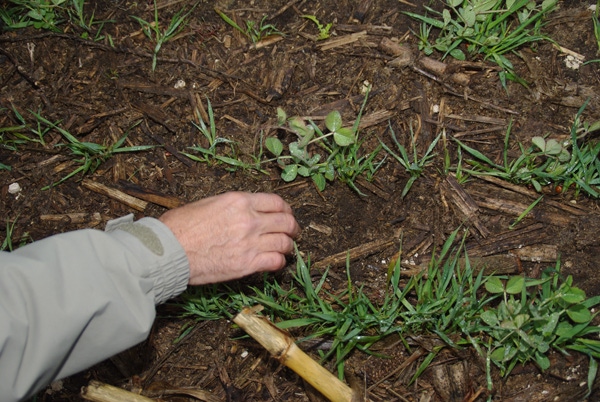October 17, 2018

Source: Iowa State University
By Alejandro Plastina and Wendiam Sawadgo
With crop harvest underway, many Iowa farmers are planning to or considering planting cover crops this fall. There are several federal and local funding sources available for both new and experienced cover crop users. This article discusses an exhaustive list of programs available for cover crop users and provides interested farmers and landowners links to online resources.
Environmental Quality Incentive Program (EQIP) and Conservation Stewardship Program (CSP)
EQIP and CSP are available through the Natural Resources Conservation Service (NRCS). EQIP is suitable for new cover crop users, while CSP is more tailored to farmers looking to enhance their conservation efforts. Farmers are eligible for up to three annual payments through EQIP and five annual payments through CSP. The payment amount differs by cover crop type. To receive payment, NRCS standards and specifications must be met for the cover crop practice. The farmer fills out an application for the adopted practice. The applications are grouped by signup period and chosen using a ranking tool in which points are assigned for different environmental benefits provided. The EQIP and CSP payment rates for different cover crop practices are described below.
The CSP gives farmers an annual payment in exchange for producing environmental benefits. Farmers work with their local NRCS agronomist to augment conservation efforts in their crop rotation. The farmer fills out documentation of their ongoing practices and the application for the adopted practice. The NRCS reviews the application, and given the proposed changes, estimates the environmental benefits using the Conservation Activity Evaluation Tool to determine the current level of stewardship. The current level of stewardship along with the planned improvement is used for ranking applications and determining payments. The CSP includes enhancement activities that address various environmental benefits of cover crops.
The Regional Conservation Partnership Program (RCPP) provides funding through local, federal, and private sources administered through EQIP and CSP, following their payment rates as well. NRCS makes CSP payments for practices or enhancements. In some instances, NRCS will make CSP payments for both practices and enhancements.
Per-acre payments for basic cover crop (organic and non-organic):
EQIP Payment: $33.83
CSP Practices Payment: $8.45
CSP Enhancement Payment: $7.90 - $14.59
A basic cover crop is defined as a small grain, legume, or other approved cover crop that is planted within 30 days of the cash crop harvest. The cover crop, after producing as much biomass as possible, is terminated with herbicide before the subsequent cash crop is planted.
Per-acre payments for multiple species (organic and non-organic):
EQIP Payment: $37.88
CSP Practice Payment: $9.88
CSP Enhancement Payment: $10.76 - $14.59
Multiple species refer to a mixture of at least two species including a small grain and legume (and may include other species) that is seeded within 30 days of harvesting the cash crop. The cover crop, after producing as much biomass as possible, is terminated with herbicide or tillage following NRCS termination guidelines before the subsequent cash crop is planted.
Per-acre payments for winterkill species:
EQIP Payment: $18.74
CSP Payment: $4.80
CSP Enhancement Payment: $7.90 - $10.76
Winterkill species are defined as a single species or mix of grass/legume/brassica that is planted within 30 days of the cash crop harvest. The cover crop species winterkills.
Iowa Department of Agriculture and Land Stewardship (IDALS)
Farmers can obtain cost share from IDALS through their local Soil and Water Conservation Districts. First-time cover crop users are eligible for $25 per acre, and continuing users are eligible for $15 per acre on up to 160 acres, subject to maintenance agreements through the Iowa Water Quality Initiative.
Farmers who have cover-cropped acres that are not eligible for cost share can still receive a crop insurance discount through the Cover Crop-Crop Insurance Demonstration Project. Through this program, farmers are eligible for a $5 per acre crop insurance premium discount through the U.S. Department of Agriculture’s Risk Management Agency in a pilot program partnered with IDALS. There is no acreage cap for this program. Farmers must follow crop insurance and NRCS guidelines for their cover crop management.
Practical Farmers of Iowa (PFI)
Cover crop funding opportunities are available for farmers who sell corn to Cargill or soybeans to Archer Daniels Midland, through two programs partnered with PFI. To participate in these programs, the farmer must schedule a one-hour consultation with a PFI agronomist and provide descriptions of the fields that will use cover crops by October 1, 2018. The farmer must also send cover crop seed and planting receipts to PFI and attend one educational PFI event by December 31, 2018.
Pepsi Co/ Cargill Low Carbon Corn Program Farmers who sell corn to the Cargill plant in Eddyville are eligible for $10 per acre on up to the larger of 160 acres or 10 percent of their total farmed acres.
Unilever/ADM Sustainable Soy Program Farmers who sell soybeans to Archer Daniels Midland are eligible for $10 per acre on up to the larger of 160 acres or 10 percent of their total farmed acres.
Annual net returns to cover crops
The Center for Agricultural and Rural Development (CARD) at Iowa State University provides research-based information on the net returns to cover crops at the website Economics of Cover Crops. Research results are based on a statewide survey of Iowa cover crop users and a multi-state survey of Midwest cover crop users. Survey responses were used to calculate per-acre revenues and production costs under various methods of planting and terminating cover crops, accounting for cost-savings experienced by farmers. Differences in costs and revenues for each farmer across cover-cropped and non-cover- cropped land were used to calculate the total net returns from using cover crops. The website includes a decision tool, three peer-reviewed academic articles, three brief summaries of the academic articles, presentations, a recorded webinar, and the final research report with the survey questionnaire.
Originally posted by Iowa State University.
You May Also Like




